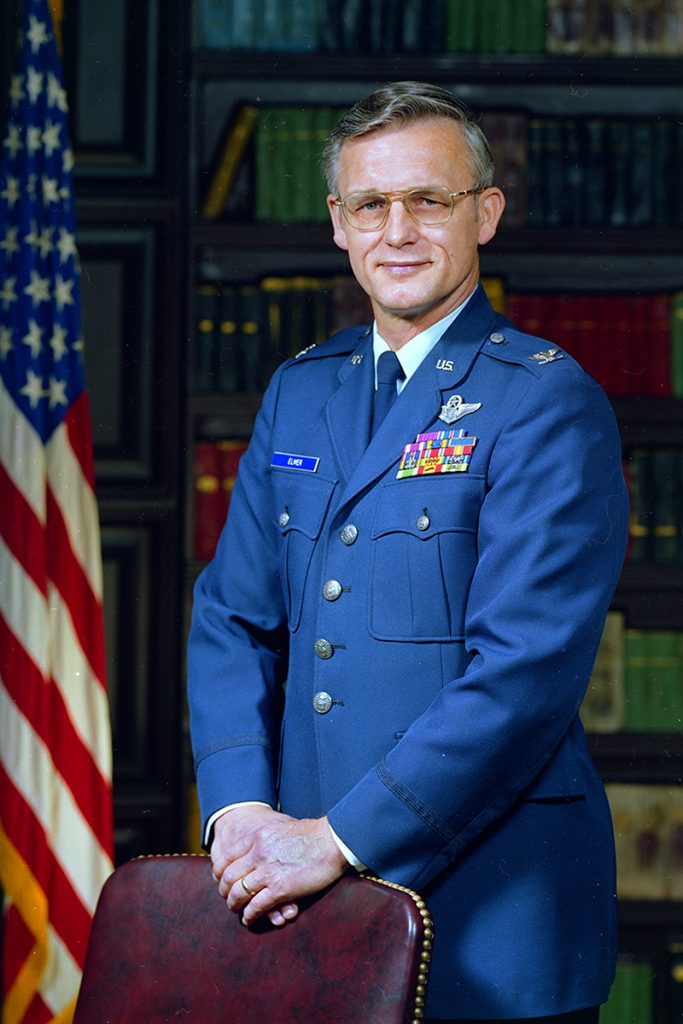
Born in 1934 in Richland Center, Wisconsin James “Jim” DeElton Elmer recalls hearing about the 1941 Japanese attack on Pearl Harbor. Standing outdoors waiting for his second sister to be born he heard a “boom, boom, boom” and thought they were being attacked by the Japanese. He feels this may have unconsciously influenced his later decision to join the military.
As a student he attended seven different one-room grade schools In Illinois. This and the fact that he was living in Wisconsin and going to school in Illinois caused considerable consternation in later life when the Air Force security staff was vetting him for a Top-Secret clearance.
In 1952 he graduated as valedictorian from North Boone high school. He came from a very large and poor family and never expected to go to college. His high school principal stepped in and ordered Jim to take the Illinois County Scholastic Aptitude Test. He did and was rewarded with a tuition-free college career. He ended up enrolling in the fall term at the University of Illinois.
It appeared he somehow always knew he would serve in the military, as three of his brothers did. One of his uncles survived the Bataan Death March. At the University of Illinois, he joined Air Force ROTC and pledged FarmHouse Fraternity where academics were a priority and Sunday morning church attendance was mandatory.
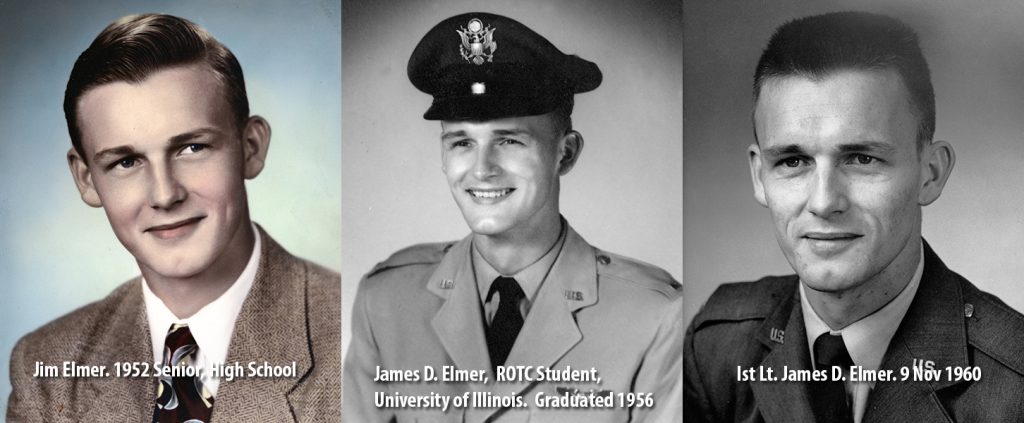
Shortly before the semester ended, while he was a second-year student, his Dad called and said that his 37-year-old Mother was very ill and wanted to see him. His Dad cautioned him to come the following morning and not drive at night. He did and when he arrived, he was told his Mother had passed. Distraught, he dropped out of college but later realized it was stupid and went to his professors just before the semester ended and asked to be allowed to take the final exams. The professors agreed. He passed all tests and got full credit for all his courses.
Needing money to continue his college education he had numerous jobs during the school year; including pinsetter at the bowling alley and working for the agriculture college creating visual aids. Each academic year, his first priority was to ensure he had a meal job. During the summer vacations he drove a truck with corn in husks, drove produce to the Green Giant factory, worked in an ice cream factory and even did 8-hour shifts doing odd jobs in the Beloit Iron Works factory. He managed to finish college without any student loans or debts.
Constantly working without enough sleep finally caught up with him. He fell asleep while driving at a high rate of speed, awoke and saw a tree on his left and a concrete bridge abutment on his right and took the middle which resulted in a taking out a fencerow, but he and the car survived with a minimal amount of damage. There were other incidents with his youthful lack of sleep/car driving but as he said, “Someone was looking out for him”!
In the summer of 1955, he should have attended AFROTC Boot Camp but had to work so he could complete his senior year at the university. He requested and got a waiver to attend the boot camp after graduation in 1956. He also graduated from Air Force ROTC and received his commission as a second lieutenant.
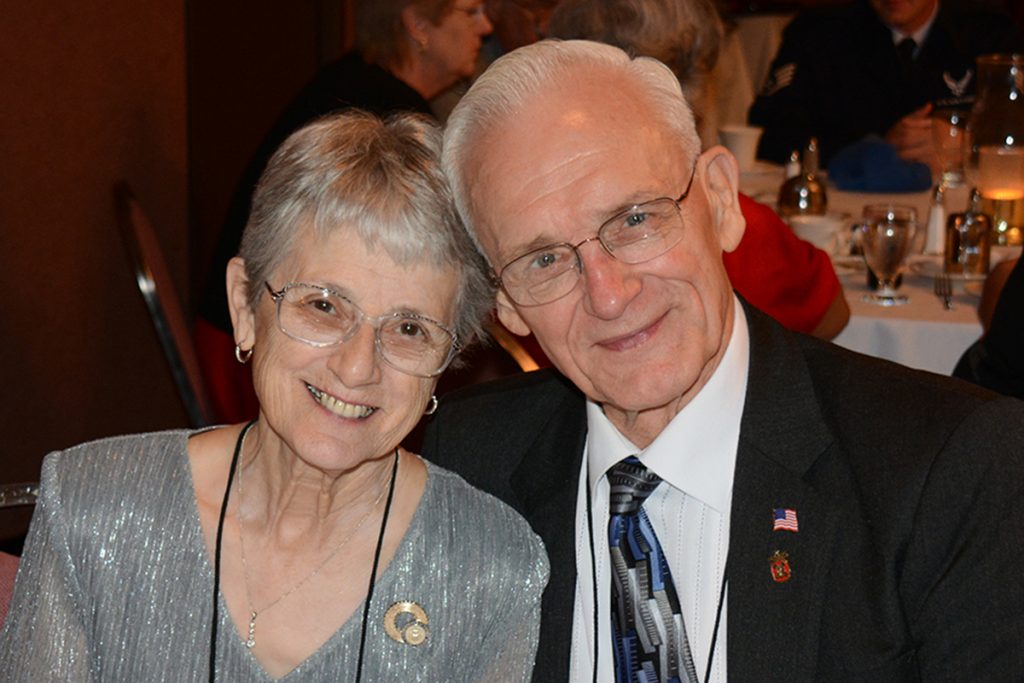
After commissioning he made his most important decision…he asked Ruth Barkley to marry him. He said none of his subsequent success would have happened without her support!
The Air Force needed pilots and Jim was interested, but his vision was not correctible to the required limits, so he was assigned to navigator training at Ellington AFB, TX during 1956-1957.
He graduated number two in his class and was offered a choice of assignments and he chose the 963rd Airborne Early Warning Squadron at McClellan AFB, CA navigating on their RC-121 Constellation aircraft.
At McClellan he volunteered and learned a lot by becoming the 963rd “volunteer for everything”. He was commander of a thirteen-man Physical Training Unit, Squadron Athletic Officer, Squadron Mail Officer, and built a picket fence around wing headquarters which may still be standing. He always felt: if you always do your best and respect those who help you, everything will turn out okay”.
He took advantage of Air Force correspondence courses and completed Squadron Officers School, Command and Staff, and Air War College while at McClellan and began work on a master’s degree at Sacramento State College.
In 1962, after four years at McClellan, he and Ruth chose an overseas assignment to Tachikawa Air Base, Japan which interrupted the completion of his master’s degree.
During his four-year tour at Tachikawa Air Base with the 815th TCS, he flew C-130 missions supporting the war effort in Vietnam. The missions were 14 days or less and therefore did not count toward a combat tour. This meant he would have to add another SE Asia tour.
In 1966 he and Ruth returned to the states with an assignment as an ROTC instructor in St. Louis University’s Parks College of Aero Technology with, among other things, responsibility for the Flight Instruction Program (FIP). The ROTC pilot students had to complete the FAA Private Pilot License before attending Air Force pilot raining. Jim thought, “I’m a navigator, I don’t have a pilot’s license and I’m in charge of something I’m not qualified to do”. So, he took his own FIP training and quickly received his personal Private Pilot’s License.
Knowing he was due for an assignment to Southeast Asia in 1969 he volunteered to go to CCK (Ching Chuan Kang), Taiwan for an unaccompanied 15-month tour if, on completion of his tour, he could return to St. Louis University and complete his master’s degree.
He was later awarded the Distinguished Flying Cross (DFC) for his actions during a 1969 combat mission in Vietnam dropping critical fuel bladders to ground troops who were under fire. The dangerous LAPES (Low Altitude Parachute Extraction System) was used.
He also was on crews flying highly classified “Blind Bat” night missions to light up the Ho Chi Minh trail for fighter aircraft who followed. Blind Bat missions were very highly classified and could not be used in awards submissions. Two Blind Bat crews [including his] were at Danang when the Vietcong overran the south side of the base in an attempt to destroy our C-130s. They succeeded. One C-130 was destroyed and the other was damaged and unflyable. The crews were sent back to Japan to fight another day.
On his return to CONUS he completed his master’s degree at St. Louis University in 11 months followed by an assignment to Maxwell AFB, AL where in the JROTC Curriculum Division he helped write all new courseware on training principles manuals including “Theory of Flight” which he authored.
His next assignment was to Little Rock AFB, AR where he was the Chief Navigator for the 32 Troop Carrier Squadron. Knowing that MAC had a regulation directing that only pilots could command MAC flying organizations, he felt his career was over when he received orders to Little Rock.
After being designated “an Air Force Officer Eligible for Promotion”, he pinned on his Colonel eagles in 1977. He says, “They made a mistake and promoted me!”
He was selected to be Deputy Base Commander of Little Rock AFB and shortly afterwards was designated the Base Commander of Little Rock AFB.
The tour at Little Rock completed, Jim received orders to report as deputy commander to the Aerospace Audiovisual Service (AAVS) at Norton AFB, CA. Shortly afterward he was appointed the Commander of AAVS feeling he was, “one the luckiest people alive”. He stayed as AAVS Commander for a record of eight years.
From the day he arrived at AAVS he felt that being commander was an important job because if something important was happening in the world, AAVS people would be there. He felt that AAVS people in the worldwide units were highly motivated and extremely capable. He told his staff, “You’ll never see me carry a camera—I don’t intend to compete with the best in the Air Force”! Under his command, AAVS grew to 76 units worldwide and were recognized throughout the Department of Defense as the best in the USAF.
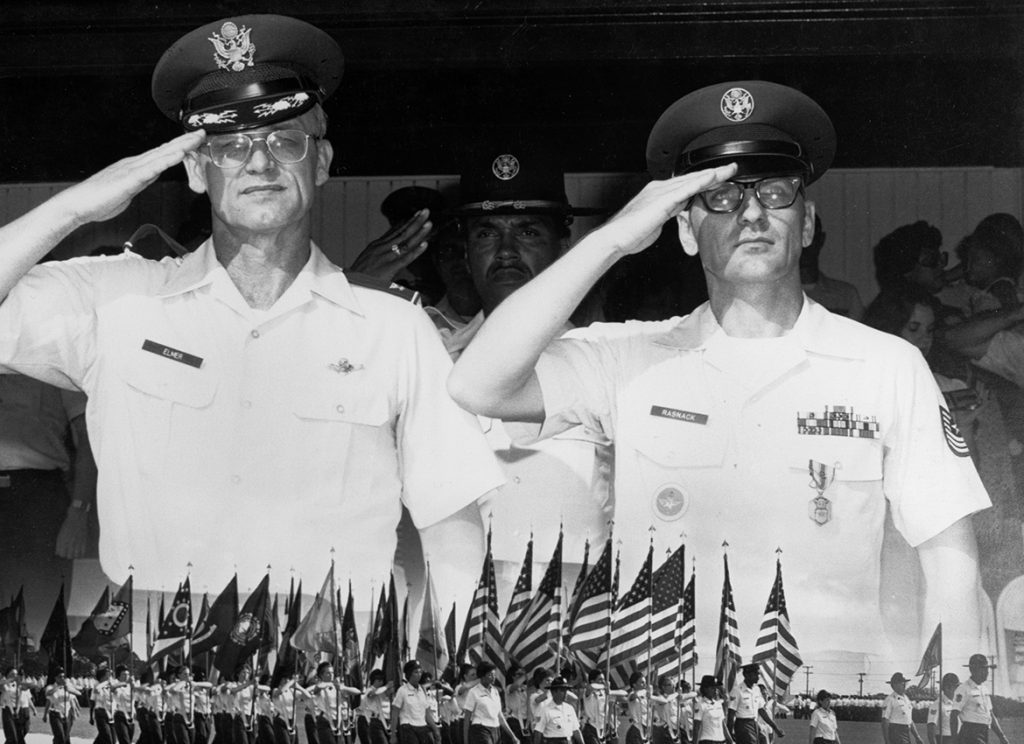
Some MEMORIES from Col. Jim Elmer’s time at AAVS
“Most people aren’t aware that a long-time AAVS employee, Al Ciurczak was the founder of the Distinguished Flying Cross Society. As a captain in World War Al was twice awarded the Distinguished Flying Cross. Unable to locate an organization dedicated to the DFC, he started the DFC Society”.
“I remember events that happened. For instance, our crew was filming when a little baby was discovered alive but partially buried in the earthquake in Mexico.”
“When the MGM Hotel caught on fire our photo journalist knew it should be documented but he had to decide whether to film it or help people!”
“Air Force units appreciated the news in the Air Force Now segments.”
“I can remember when Grenada happened our people were called at the very last minute. They were almost packing while running down the taxiway to the airplane. Our people worked hard at it.”
“A masterful work that I remember our people’s making was the Air Force Now’s film “Not Forgotten”.
“One of the special things about people in AAVS: they were hired to do their job and they did their job! AAVS received three Outstanding Unit Awards. To receive one, your mission has to be important and you must meet and exceed the criteria.”
“The Order of the Sword is the most memorable award I received in my career.” At that time only 34 people had received the Order of the Sword. What made it special was the fact that it was presented by the enlisted members of AAVS.
“I was extremely fortunate in having been selected to be the commander of such a fantastic organization as AAVS. My personal feeling was that AAVS was comprised of talented, creative people who were the best in the Department of Defense”. “I felt that the organization should not have been disbanded or dissected.”
After separation from the Air Force in 1986 he went to work for a civilian contractor as the C-130 Training Management System Officer to evaluate simulator-training of C-130 crews at Little Rock AFB.
He also became active by teaching the first Arkansas state mandated class on the American flag to 5th grade students. He has subsequently conducted classes for thousands of fifth grade students.
He is a past national commander of the Military Order of the World Wars—a veterans’ organization interested in leadership training and fostering patriotism in young people. MOWW participates in recognition of and awards to ROTC and JROTC cadets and scout Eagle and Gold Award recipients.
Jim and Ruth Elmer are staying active and enjoying a well-deserved retired life.
Profile by Ken Hackman

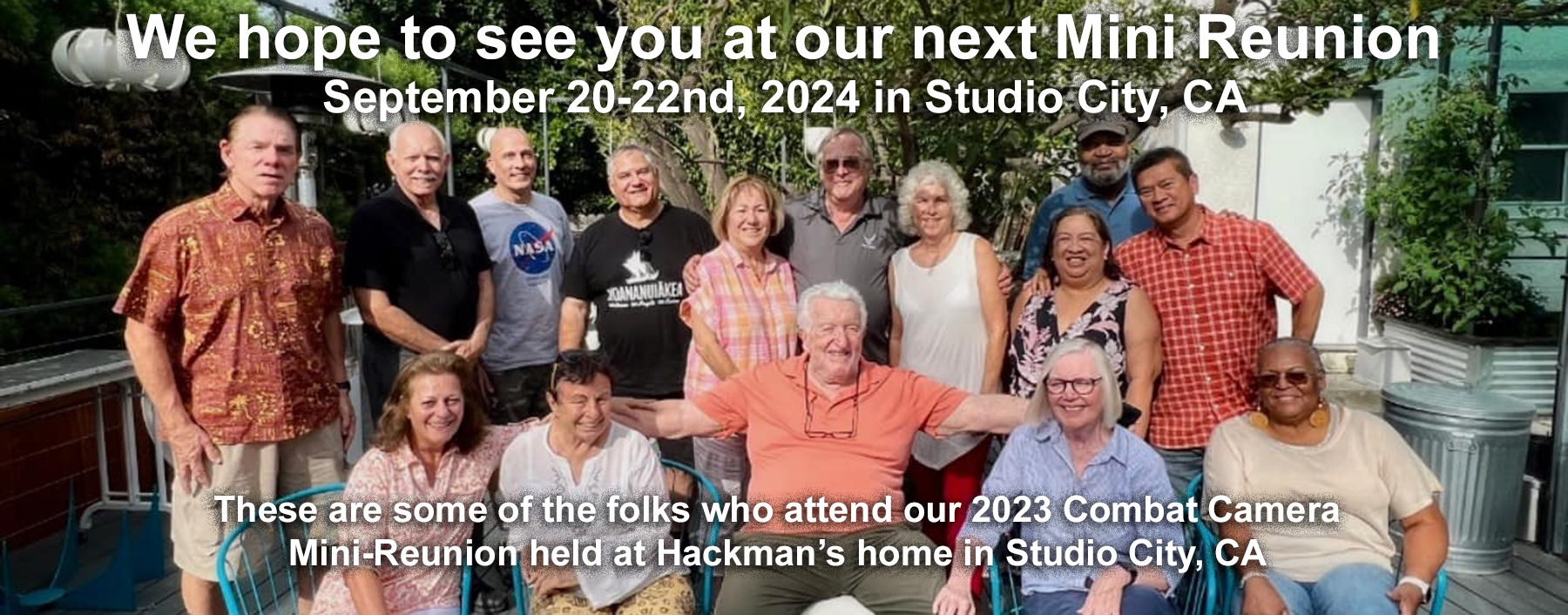
Well done Ken.